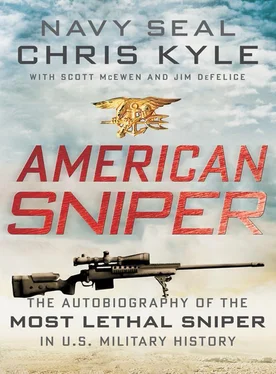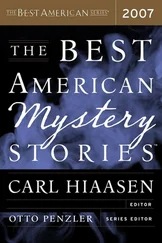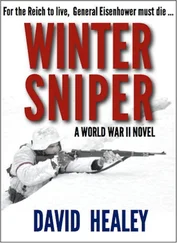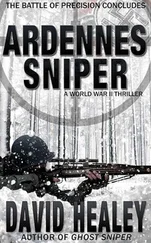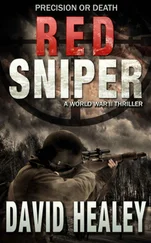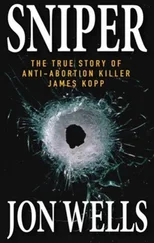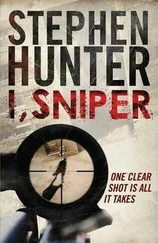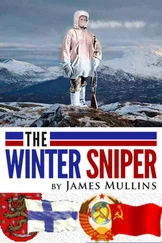The momentum of the battle quickly shifted in our favor. The soldiers on the ground began maneuvering to assault the mosque, hoping to catch the insurgents before they could slide back into whatever sewer they’d emerged from. We shifted our fire higher, moving our aim above their heads to allow them to get in.
Somewhere in the middle of the fight, a piece of hot brass from another gun—probably an M-60 machine gun next to me—shot against my leg and landed in my boots next to my ankle. It burned like hell, but I couldn’t do anything about it—there were too many bad guys popping up from behind the walls, trying to get my people.
I was wearing simple hiking boots rather than combat boots. That was my normal style—they were lighter and more comfortable, and ordinarily more than enough to protect my feet. Unfortunately, I hadn’t bothered to lace them up very well before the battle, and there was a space between my pants and the boot where the brass happened to fall after it ejected.
What had the instructors told me in BUD/S about not being able to call “time out” in battle?
When things quieted down, I stood up and pulled out the casing. A good wedge of skin came out with it.
We secured the mosque, worked through the rest of the village, then called it a day.
Different Ways of Killing
We went on patrols with the Army unit several more times, trying to reduce resistance in the area. The idea was simple, if potentially risky: we’d make ourselves visible, trying to draw fire from the insurgents. Once they showed themselves, we could fire back and kill them. And usually we did.
Pushed from the village and the mosque, the insurgents retreated to the hospital. They loved hospital buildings, not only because they were big and usually well-made (and therefore protective), but because they knew we were reluctant to attack hospitals, even after they were taken over by terrorists.
It took a while, but the Army command finally decided to attack the building.
Good, we all told them when we heard the plan. Let’s go do it.
We set up an overwatch in a house some two or three hundred yards from the hospital building, across a clear field. As soon as the insurgents saw us, they started letting us have it.
One of my guys shot off a Carl Gustav rocket at the top of the building where they were shooting from. The Gustav put a big ol�� hole there. Bodies flew everywhere.
The rocket helped take some of the fight out of them, and as resistance weakened, the Army punched in and took the building. By the time they reached the grounds, there was almost no resistance. The few people we hadn’t killed had run away.
It was always hard to tell how many insurgents were opposing us in a battle like that. A small handful could put up a pretty good fight. A dozen men fighting behind cover could hold up a unit advance for quite a while, depending on the circumstances. Once the insurgents were met with a lot of force, however, you could count on about half squirting out the back or wherever to get away.
We’d had the Carl Gustav with us earlier, but as far as I know, this was the first time we’d actually killed anyone with it, and it may have been the first time any SEAL unit did so. It was certainly the first time we used it against a building. Once word spread, of course, everyone wanted to use them.
Technically, the Carl Gustav was developed to combat armor, but as we found out, it was pretty potent against buildings. In fact, it was perfect in Ramadi—it just blew right through reinforced concrete and took out whoever was inside. The overpressure from the explosion wiped out the interior.
We had different rounds for the gun. (Remember, it’s actually considered a recoilless rifle rather than a rocket launcher.) A lot of times, the insurgents would hide behind embankments and other barriers, well protected. In that case, you could set an air-burst round to explode over them. The air burst was a lot worse than anything that detonated on the ground.
The Gustav is relatively easy to use. You have to wear double ear-protection and be careful where you stood when it’s fired, but the results are awesome. Everyone in the platoon wanted to use it after a while—I swear there were fights over who was going to launch it.
When you’re in a profession where your job is to kill people, you start getting creative about doing it.
You think about getting the most firepower you possibly can into the battle. And you start trying to think of new and inventive ways to eliminate your enemy.
We had so many targets out in Viet Ram we started asking ourselves, what weapons have we not used to kill them?
No pistol kill yet? You have to get at least one.
We’d use different weapons for the experience, to learn the weapon’s capabilities in combat. But at times it was a game—when you’re in a firefight every day, you start looking for a little variety. No matter what, there were plenty of insurgents, and plenty of firefights.
The Gustav turned out to be one of our most effective weapons when we came up against insurgents shooting from buildings. We had LAW rockets, which were lighter and easier to carry. But too many of them turned out to be duds. And once you fired a LAW, you were done; it wasn’t a reloadable weapon. The Carl Gustav was always a big hit—pun intended.
Another weapon we used quite a bit was the 40-mm grenade launcher. The launcher comes in two varieties, one that attaches under your rifle and another that is a stand-alone weapon. We had both.
Our standard grenade was a “frag”—a grenade that exploded and sprayed an area with shrapnel or fragments. This is a traditional antipersonnel weapon, tried and true.
While we were on this deployment, we received a new type of projectile using a thermobaric explosive. Those had a lot more “boom”—a single grenade launched at an enemy sniper in a small structure could bring the whole building down because of the over-pressure created by the explosion. Most times, of course, we were firing at a larger building, but the destructive power was still intense. You’d have a violent explosion, a fire, and then no more enemy. Gotta love it.
You shoot grenades with what we call Kentucky windage—estimating the distance, adjusting the elevation of the launcher, and firing. We liked the M-79—the standalone version that was first used during the Vietnam War—because it had sights, making it a bit easier to aim and hit what you wanted. But one way or another, you quickly got the hang of things, because you were using the weapon so much.
We had contact every time we went out.
We loved it.
Taya:
I had a hard time with the kids after Chris deployed. My mom came and helped me, but it was just a difficult time.
I guess I wasn’t ready to have another baby. I was mad at Chris, scared for him, and nervous about raising a baby and a toddler all by myself. My son was only a year and a half old; he was getting into everything, and the newborn happened to be really clingy.
I remember just sitting on the couch and crying in my bathrobe for days. I would be nursing her and trying to feed him. I’d sit there and cry.
The C-section didn’t heal well. I had women tell me, “After my C-section, I was scrubbing the floors a week later and I was all good.” Well, six weeks after mine I was still in pain, still hurting and not healing really well at all. I hated that I wasn’t healing like those women. (I found out later it’s usually the second C-section that women bounce back from. No one told me that part.)
I felt weak. I was mad at myself that I wasn’t tougher. It just sucked.
Читать дальше
